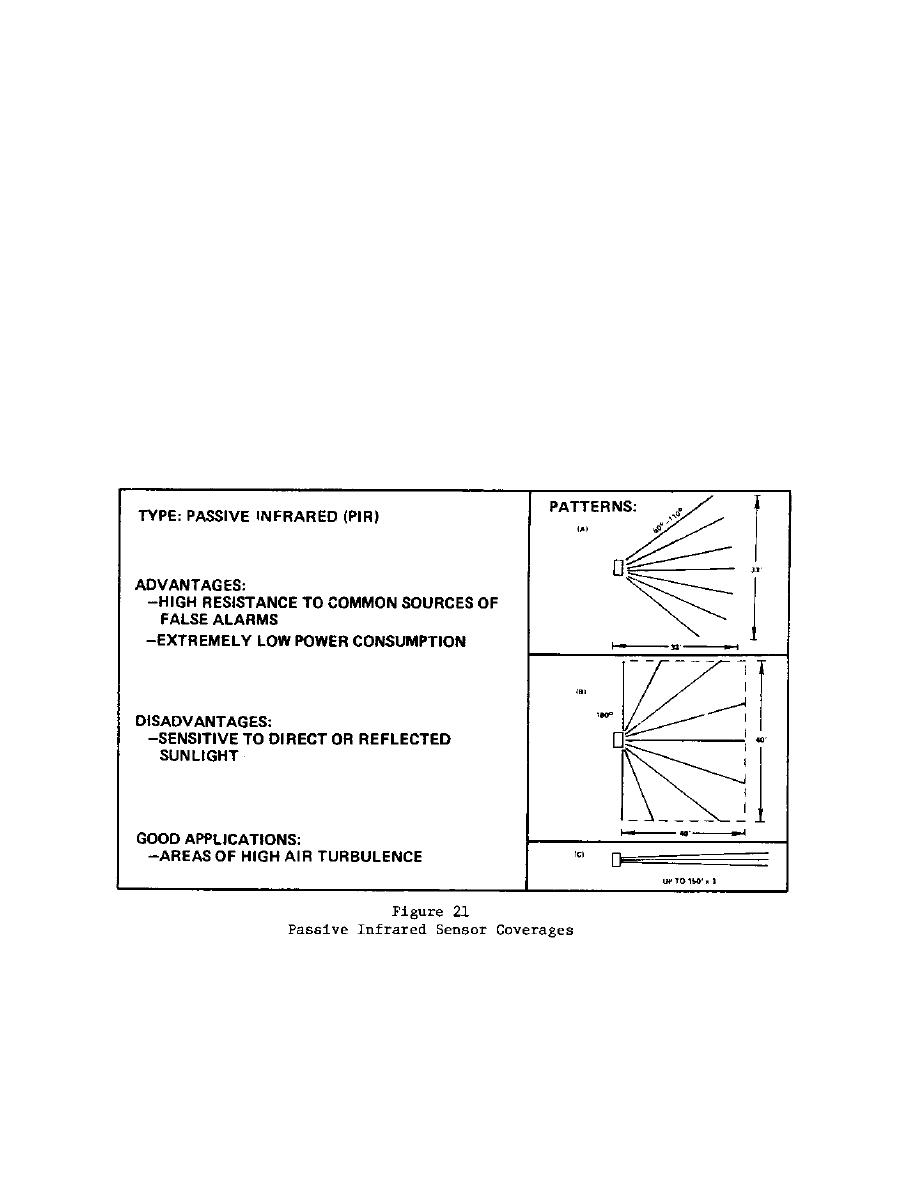

Custom Search
|
|

|
||
 5-20 micron region of the far infrared portion of the frequency spectrum
(approximately equal to the heat of a 50-watt light bulb), PIRs are designed
to function in that frequency range to minimize nuisance alarms from visible
light sources, etc. Electronics in the sensors restrict detection to a few
seconds when the change in energy is first detected; the sensor then adjusts
to the new state. Movement to a new location will then cause another alarm.
The optics within the sensor will determine the patterns of detection
provided. A single mirror will provide one "finger" of detection. Sensors
which provide 180 degrees of coverage have up to 17 "fingers" of detection.
Optimal detection distances depend upon the sensor model selected and sensor
positioning. Figure 21 depicts typical PIR model coverages. The fingers
depicted are actually three-dimensional cones and represent infrared energy
receiving paths. As a passive device, no energy is emitted by the sensor.
Consequently, power consumption is extremely low. Various sensor models
permit surface or recessed mounting. Proper positioning will make a PIR
self-protecting and minimize the opportunity for an intruder who is aware of
the detection pattern of a particular model to defeat the sensor. The
following application and installation considerations apply to passive
infrared sensors.
13.02-44
|
 |
|
 |
||